NVIDIA Launches Shield Tablet
by Joshua Ho on July 22, 2014 9:00 AM EST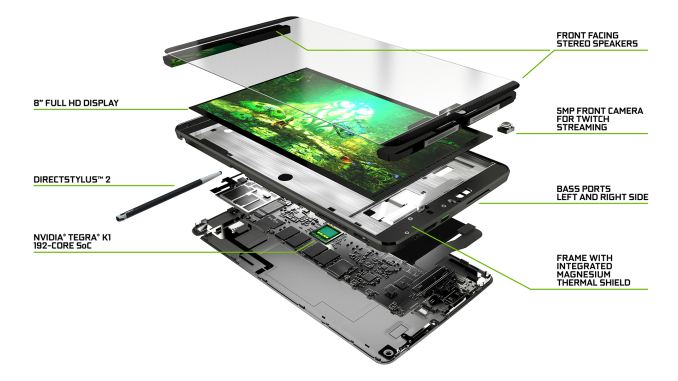
Today, NVIDIA is announcing the Shield tablet. While normally such launch announcements don’t require much in the way of exposition, NVIDIA is in an odd place. Last year, the Shield portable and Tegra Note 7 were the primary mobile devices shipping with Tegra 4. In hindsight, the Shield portable was a bit too niche to ever reach mass adoption. It was first and foremost a gaming device, with a display attached to a controller as opposed to a controller attached to a display. The result was that while it was surprisingly good for gaming, it wasn’t the best tablet. It really only worked in landscape mode, the display size was relatively small (5 inches diagonal), and using the touchscreen was an awkward experience.
The Tegra Note 7 was NVIDIA’s attempt at competing in the mainstream tablet market. While the dual front facing speakers and stylus were good advantages over the Nexus 7, it wasn’t clearly better than the Nexus 7. The display was lower resolution, lower contrast, and not as well calibrated. The WiFi module only supported 2.4 GHz, and there was only a gigabyte of RAM. While it was possible to emulate a Shield-esque experience with the Note 7, there was no game streaming from PC to tablet due to the lack of 5 GHz WiFi, and the controllers on the market simply weren’t as good as the controller in Shield. In addition, because the Tegra Note 7 wasn’t directly controlled by NVIDIA the experience in software update speed could vary.
From the lens of past experience, the Shield tablet makes a lot of sense. The specs are right for a good tablet, but it’s also a proper Shield device. As a tablet, it has all the right pieces. A high resolution display, Tegra K1 (Cortex A15 variant), dual front facing speakers and bass reflex ports, a new stylus, 5 GHz WiFi, and a 5MP front facing camera. I’ve put a table of the specs below for easier reading.
| NVIDIA SHIELD Tablet | |
| SoC | Tegra K1 (2.2 GHz 4x Cortex A15s) |
| RAM/NAND | 2 GB DDR3L-1866, 16/32GB NAND + microSD |
| Display | 8” 1920x1200 IPS LCD |
| Network | 2G / 3G / 4G LTE (NVIDIA Icera i500 UE Category 3/4 LTE) |
| Dimensions | 221 x 126 x 9.2mm, 390 grams |
| Camera | 5MP rear camera, 1.4 µm pixels, 1/4" CMOS size. 5MP FFC |
| Battery | 5197 mAh, 3.8V chemistry (19.75 Whr) |
| OS | Android 4.4.2 |
| Connectivity | 2x2 802.11a/b/g/n + BT 4.0, USB2.0, GPS/GLONASS, mini HDMI 1.4a |
| SIM Size | None or MicroSIM |
In the stylus side, DirectStylus 2 is said to reduce the inking latency to half that of the implementation we saw in Tegra Note 7. In practice it seemed that the stylus latency was low and lines tracked closely to the stylus, but I’ll avoid final judgment until the review. NVIDIA also claims that there are more levels of pressure sensitivity, but it’s not quite clear how many levels there are. NVIDIA has also added handwriting recognition software, which worked relatively well in some casual testing. The Dabbler application also seems to provide a relatively realistic simulation of various physical mediums such as oil painting and watercolor, although it’s mostly targeted towards artists.
In addition to the stylus features, NVIDIA is advertising 1080p Netflix support. Normally, due to the DRM restrictions associated with high bitrate streaming, most Android devices only support low resolution streams. NVIDIA has done all of the necessary work to satisfy these DRM requirements, so it supports the highest bitrate available to mobile devices. Of course, this feature will be disabled with an unlocked bootloader, but it’s a good feature to have for mobile streaming.
Outside of tablet features, the gaming features seem to be quite compelling. The controllers themselves were comfortable, and were very similar to the Shield portable’s ergonomics. NVIDIA is emphasizing that these controllers connect over WiFi direct, and the frequency selected depends upon the network that is used. The result is much lower latency, and NVIDIA is also able to run a headset jack and microphone through the controller due to the higher bandwidth that WiFi provides. Up to four controllers can be paired to the Shield tablet for multiplayer games.
Due to the addition of 5 GHz 2x2 WiFi, NVIDIA’s GameStream and GRID, which means that it’s possible to stream games from a PC within the same LAN to Shield tablet and play games by streaming from NVIDIA servers to the tablet. NVIDIA did note that only 720p is supported through WiFi, and an Ethernet connection is necessary to stream at 1080p due to latency reasons.
While both GameStream and GRID are largely similar in experience compared to the Shield portable, the Kepler GPU in the Tegra K1 enables a great deal of potential for gaming. Trine 2 will ship with the tablet, and is a direct port from the console game. NVIDIA also showed off the improvements in games like Half Life 2 and Portal, which run full OpenGL rather than OpenGL ES as it did on Shield portable. Outside of feature set, NVIDIA is claiming that the K1's GPU is far faster than the GPU in either the Exynos 5420 or Apple's A7 SoC.
In addition, NVIDIA showed off a full version of War Thunder running on Shield tablet, and claimed that it will be able to play on multiplayer with PCs. This included both the tank and aircraft combat aspects of the game. NVIDIA also showed that the Unreal Engine 4 demo from Google IO runs on the Shield tablet.
Finally, the Shield tablet will be the first Android tablet to support streaming to Twitch. By leveraging the built in front facing camera, it’s possible to stream both gameplay and webcam/commentary. In practice, I didn’t see any noticeable issues with this system, and it seemed to work as promised. The 1.4 micron pixel size seemed to make the quality relatively acceptable even indoors.
That was a lot to go over, but I think the key here will be the native gaming experience on Shield tablet. While it’s fully possible for Shield tablet to serve as a dedicated console with GameStream, the real use case will be whether it can provide a solid gaming experience using the SoC for rendering rather than as a video decoder for a PC somewhere else. With games like War Thunder and Trine 2, it seems that there is immense potential for a very compelling product. While NVIDIA isn’t starting from nothing this time around, this ecosystem aspect is still a bit risky.
The Shield tablet will go on sale July 29th for the US, August 14th for Europe. The 16GB/WiFi variant will cost 299 USD, the 32GB/LTE variant will be 399 USD. The controller is priced at 59 USD, and the flip cover at 39 USD.


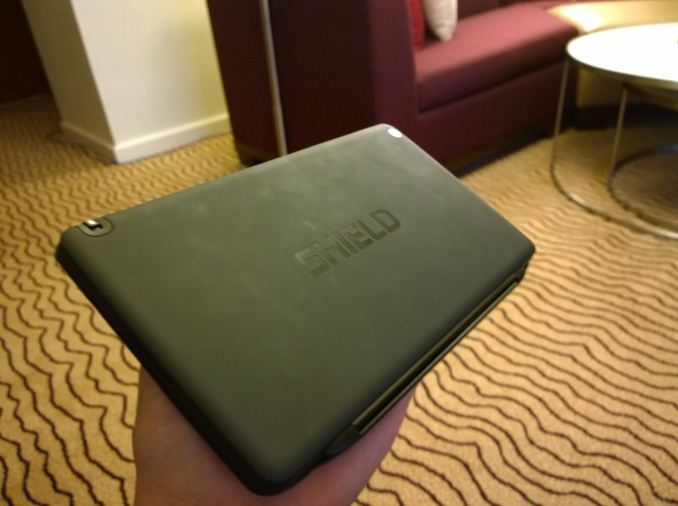
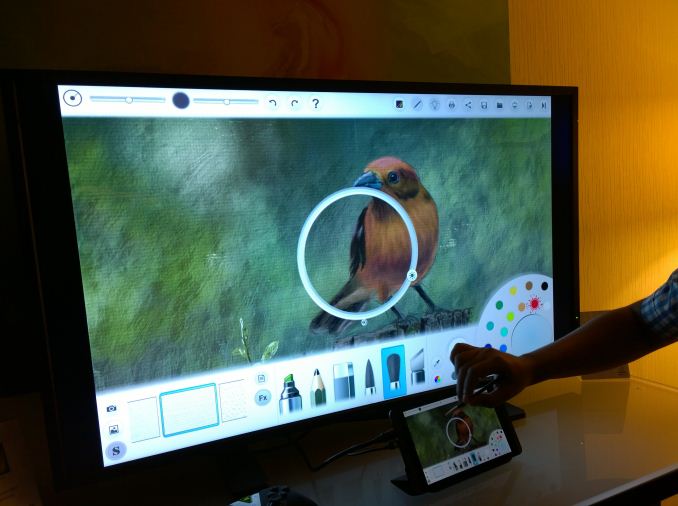
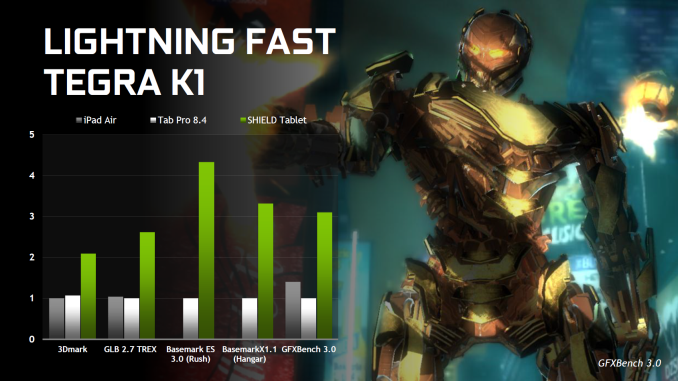

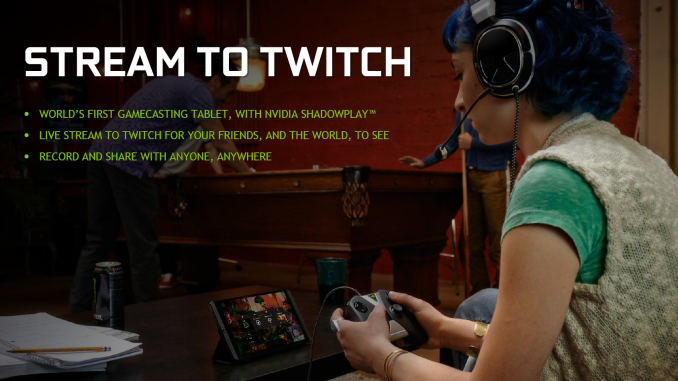








107 Comments
View All Comments
Friendly0Fire - Tuesday, July 22, 2014 - link
I'm really looking forward to a review from AT as I'm extremely interested by this thing. A vanilla Android experience with stylus support and gaming focus is right up my alley.fivefeet8 - Tuesday, July 22, 2014 - link
There is a video on Youtube where it shows there is a track pad on the controller on top of the volume controls. That's interesting as that would help with navigating menus.Hrel - Tuesday, July 22, 2014 - link
So all it has is a controller that plugs in like a console controller? That's stupid. IT's not a portable gaming machine if it's not all integrated into one unit. They should design some snap ons like Razer made so it can actually be a portable gaming device.If it's a good controller though I could see using it on PC at home for certain games.
fivefeet8 - Tuesday, July 22, 2014 - link
The controller is wireless. You can also use whatever snap on BT controller available out there that fits the size.smorebuds - Tuesday, July 22, 2014 - link
Yeah the pic is a bit confusing. That wire goes from controller to headset, as stated in the article.cashnmillions - Tuesday, July 22, 2014 - link
If I was in the market for a tablet I would definitely go with this. Hopefully they come out with better games for tablets, I haven't really been impressed with any lately. I wonder how well it would do in emulating PS2. Imagine Shadow of the Colossus on a mobile platform like this.hahmed330 - Tuesday, July 22, 2014 - link
I would love to see some Trine 2 action please....fivefeet8 - Tuesday, July 22, 2014 - link
There's quite a few videos on Youtube already with various games including Trine2 running on the new tablet.kron123456789 - Wednesday, July 23, 2014 - link
And not only this tablet. There are few videos with Trine 2 gameplay on Xiaomi MiPad.Wolfpup - Tuesday, July 22, 2014 - link
I wonder what clock speed the GPU cores run at... The clocks are probably much lower, but if they weren't, this would be basically half as powerful (for GPU) as my Asus gaming notebook from a few years ago. As it is it's probably more like 1/4, but still.It's GOT to be more powerful (in terms of GPU) than the last gen consoles, right? Kind of cool...of course moot point since they're far better for games.
Wish this thing ran...anything other than Android.